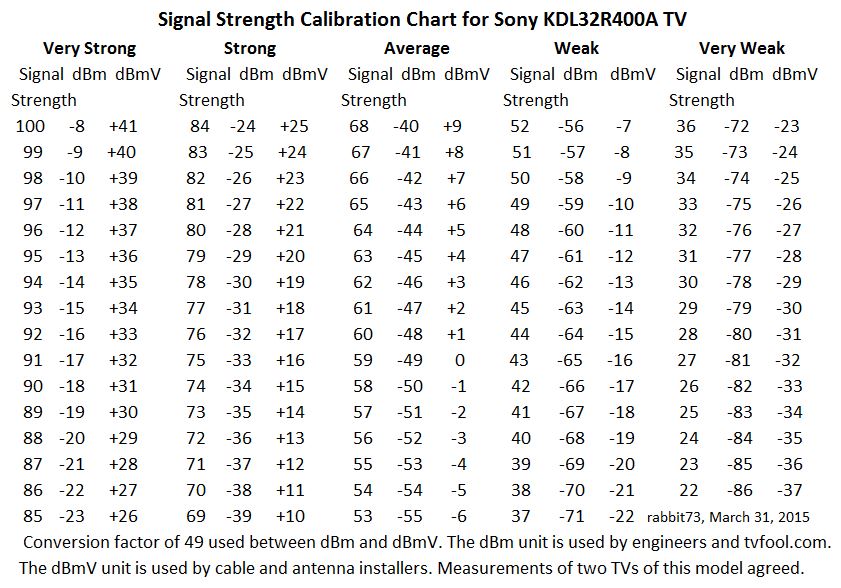And now to signal strength.
TVFOOL reports give signal strength in the dBm column, but it's more properly called signal power, because the dBm value is a ratio of the power of the signal as compared to the reference level of 0 dBm. 0 dBm doesn't mean no signal, it's just the reference level. Signals less than the reference level are given a minus sign; signals greater than the reference level are positive.
ATSC has suggested dBm values for TV receivers in ATSC A/74:
5 RECEIVER PERFORMANCE GUIDELINES
5.1 Sensitivity
Quote:
|
A DTV receiver should achieve a bit error rate in the transport stream of no worse than 3x10E-6 for input RF signal levels directly to the tuner from -83 dBm to -5 dBm for both the VHF and UHF bands.
|
To make an estimate of your situation, you can add the antenna gain and the preamp gain to the dBm value in your report.
Most tuners will drop out a signal at about -85 dBm.
5.2 Multi-Signal Overload
Quote:
|
The DTV receiver should accommodate more than one undesired, high-level, NSTC or DTV signal at its input, received from transmission facilities that are in close proximity to one another.For purposes of this guideline, it should be assumed that multiple signals, each approaching –8 dBm, will exist at the input of the receiver.
|
Tuners can tolerate much stronger signals than preamps. The difference is approx. equal to the preamp gain.
To give you an idea of how strong a signal needs to be, take a look at the dBm values in the signal strength calibration chart that I made for the Diagnostics Screen of my Sony KDL32R400A:

End of short course.